This is the weekend edition of TheMarioBlog and will be updated as needed. The next blog post is Monday, August 26. I will be reporting from Paris, Bogota and New York this coming week.
New book: history of desktop publishing

I will be taking a look at History of Desktop Publishing, a new book \written by Frank Romano, veteran of the printing and publishing industries who was publisher and editor of TypeWorld and Electronic Publishing magazine.
The book is said to be a personal journey from the end of the typewriter era to the age of the Internet, examining the development of personal computers, pagemaking and graphic design programs, postscript, digital fonts, data storage, inkjet printing, GUIs, and the rise of the digital era.
I imagine that , for some of us veterans, this book will be a good reminder of what we have experienced in the past 50 years , but for a new generation it will be a historical account that will make them realize how lucky they are to be practicing their craft with all the technological advantages of today.
Here is how the publishers describe the book’s content:
History of Desktop Publishing is a personal and encyclopedic story of how the personal computer, unique applications, and many colorful people changed the creative and print communities. Author Frank Romano has documented the histories of hot metal and phototypesetting and continues the tale of document production in this book. This installment ends as the Internet becomes a primary focus.
Here are some images from the new book:


For more information:
Push notifications: an annoyance?
While the verdict is out on the answer to that question, it is one that I tried to answer when I was writing a segment about Push Notifications and Alerts in my new book, The Story, as we see in this segment opening of Book 2: Storytelling.

Help is on the way, however. I read that a team of five from The Associated Press plan to spend the next eight months looking into the real value of push alert notifications that are bringing news to consumers.
The team, working with a fellowship from The Donald W. Reynolds Journalism Institute, will set out to learn more about consumers’ information needs and wants. They will do so by experimenting with various alerting features on the AP’s news site and mobile app to test different delivery methods, topics and timing. They will measure various metrics, which may include open, follow and uninstall rates as they study user preferences. As they seek to learn users’ preferences, they will also conduct user research.
I like push notifications. I think users decide how to utilize the information. I hear that very few people immediately turn to read a story after receiving a push notifications. However, I personally like that the push notification gives me a sense of what is happening, allowing me to go more in depth if I want to. Sometimes the push notification is all we need to know about a certain subject.
I look forward to the results of the AP team.
Facebook and news
This news item received a lot of press when it appeared. Facebook executives tell Axios they’re hiring seasoned journalists to help curate a forthcoming “News Tab” that they hope will change how millions get news.
What we know about News Tab:
- Facebook will pay dozens of publishers to license content for News Tab, and news from many more will be included.
- The Wall Street Journal reported that the largest partners will be paid millions of dollars a year.
- News Tab will try to give credit to the outlet that broke a story, rather than an aggregator.
What’s next: A News Tab test for 200,000 users will begin in October, with a rollout to all U.S. users early next year.
Related
CNN launches Facebook-funded mobile-first daily news show ‘Go There’
The new show features single-topic global stories created exclusively for Facebook Watch to help the broadcaster figure out what mobile news audiences want
The Spectator launching print edition in the US

The Spectator, the world’s oldest English-language magazine, is launching a U.S. monthly print version for the first time in its history this fall, after starting a U.S. digital presence last year.
I make it a point in TheMarioBlog to call attention to stories that give print a boost. This is such a story. For a publication that has been published in the U.K. continuously since it launched 1828 as a weekly, it is significant that their expansion into the US comes in the way of a print edition.The first issue of the monthly publication will debut in October 2019,
Headlines we like

Glamour goes digital first
Glamour UK, one of the best known fashion magazine brands, has undergone a transformation that takes it from print to digital first——with emphasis on that one fashion apparel that is a constant companion: the phone.
Camilla Newman, Glamour’s Publishing Director, points out that her magazine did not go to a digital first strategy our of necessity: as in its print edition losing readers. Not at all, she emphasizes.
“It’s really important to point out that the print circulation of Glamour was really healthy when we were looking at changing the format to a digital-first brand,” she said.
In any case, Newman said that the goal of the digital first move was to secure the brand’s future.
“We also knew that our largely millennial audience played out their lives on their phones…Our audience spend an average of two and a half hours a day on social media. And that’s just what they’re admitting to.
“So rather than shackle them to a 12 monthly print conversation, we wanted to play where they already were, on their phones, in their pockets.”
Read more here:
Mario’s speaking engagements
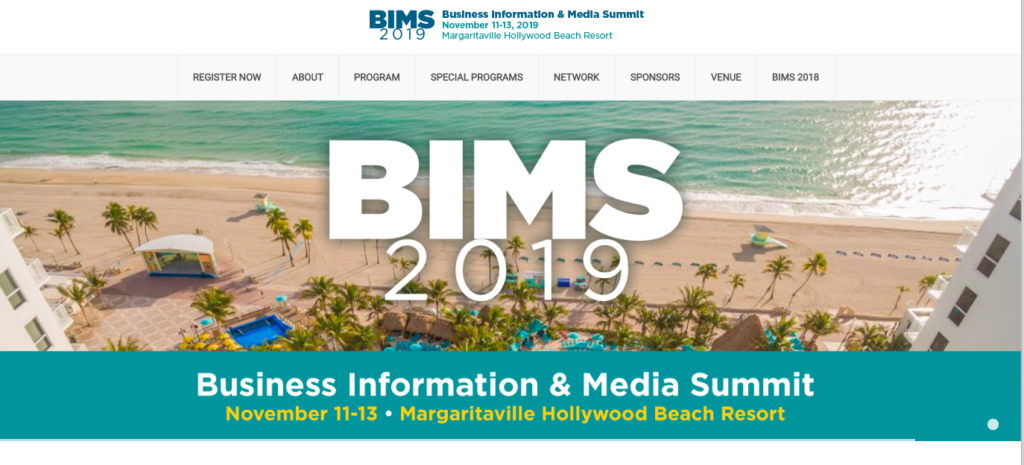
Keynote presentation: Business Information & Media Summit (BIMS).
Order print edition of The Story from Amazon
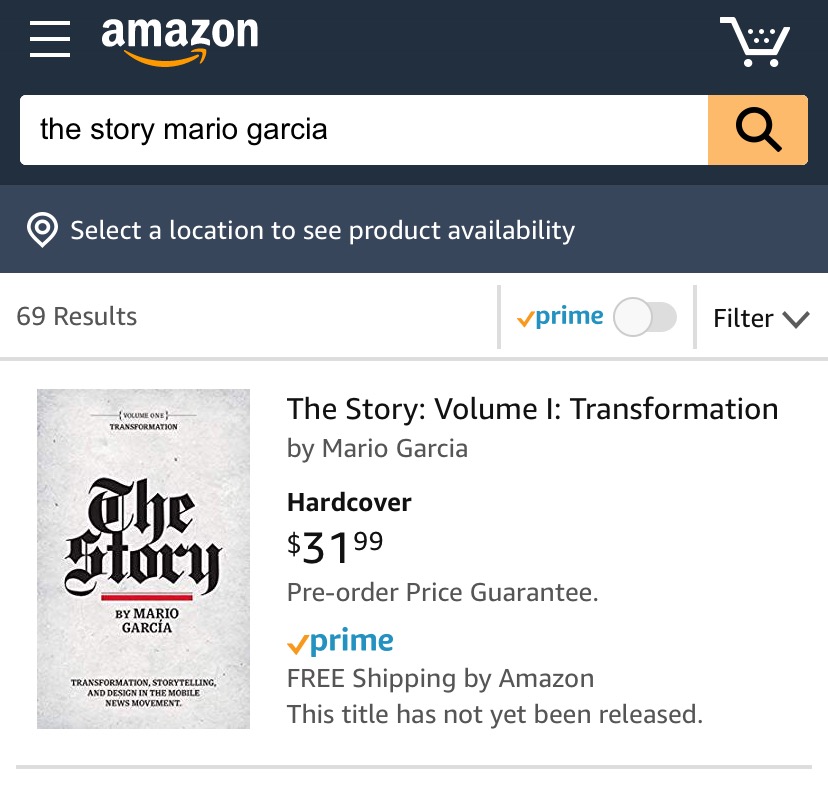
You can order the print edition of my new mobile storytelling book, The Story, from Amazon already here:
Pre-order The Story
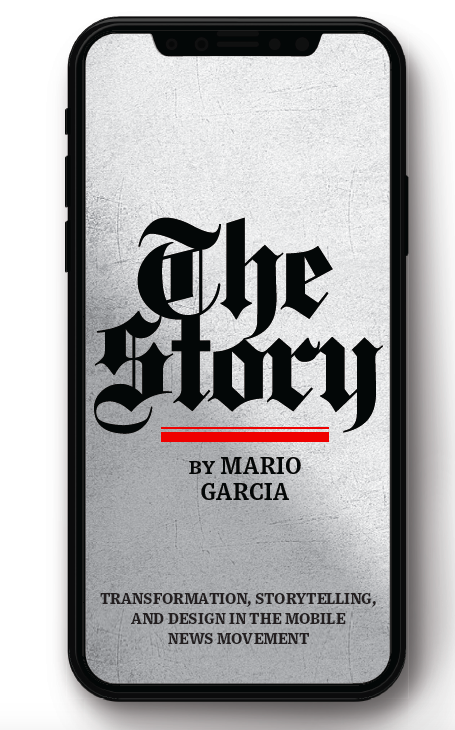
The newspaper remains the most powerful source of storytelling on the planet. But technology threatens its very existence. To survive, the Editor must transform, adapt, and manage the newsroom in a new way. Find out how, pre-orderThe Story by Mario Garcia, chief strategist for the redesign of over 700 newspapers around the world.
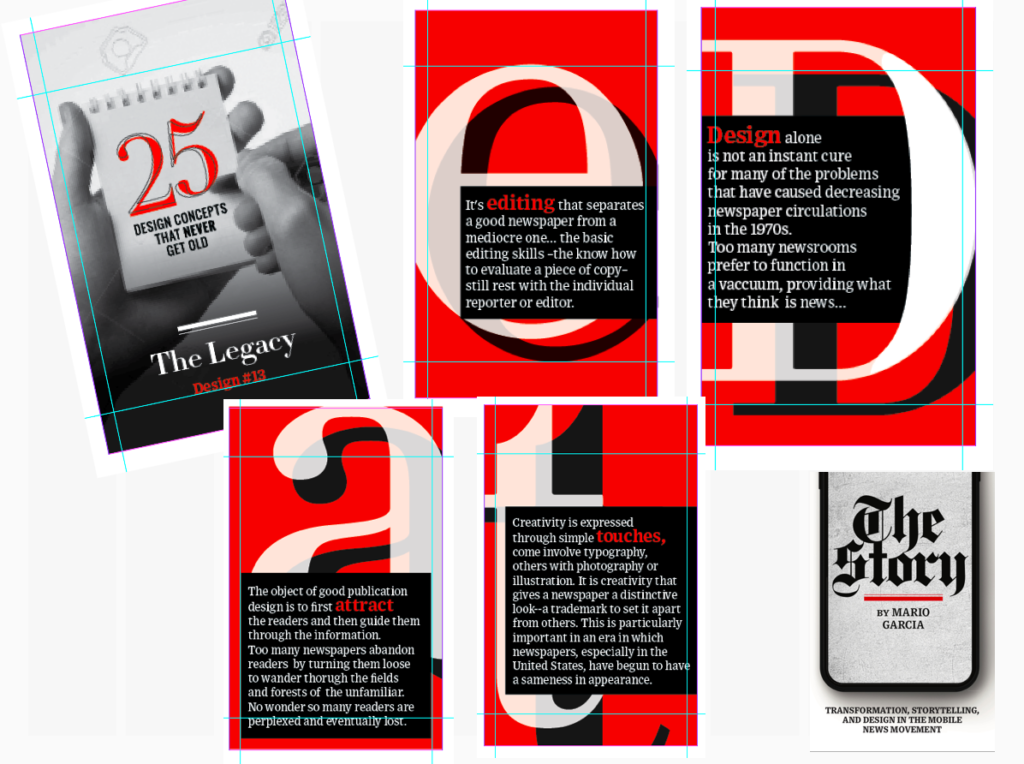
Order here:
https://thaneandprose.com/shop-the-bookstore?olsPage=products%2Fthe-story

The Story will also appear in print
I am happy to announce that we will, indeed, have a print edition of my mobile storytelling book, The Story. I thank you for expressing your interest to our publisher, Thane Boulton, of Thane & Prose. Now the print edition will be a reality, and you can already see the cover and back cover here:
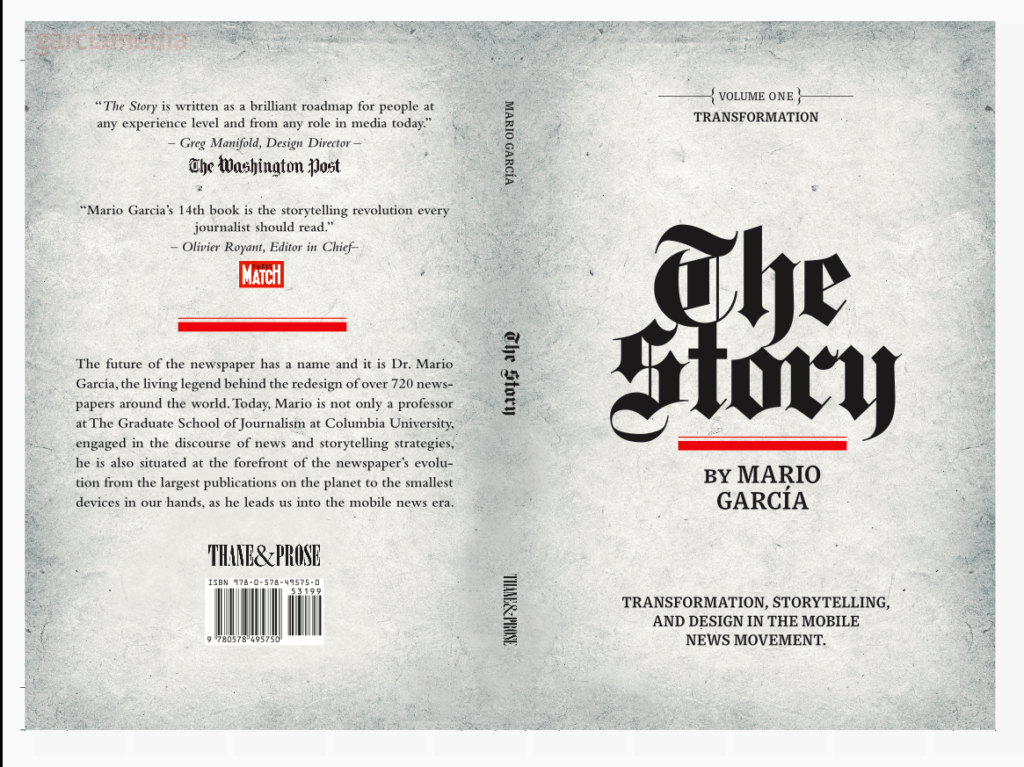
An interview of interest
http://www.itertranslations.com/blog/2019/3/11/fd60ybflpvlqrgrpdp5ida5rq0c3sp
The Inquirer is a brand that always resonates with me, as it was one of my projects in 1996, so I am aware of the traditions the Inquirer folks hold dear. After all, this is a newspaper that even Benjamin Franklin wrote for. I recall, as we were doing the redesign of The Inquirer, when Max King was editor in chief, how I was reminded, at every step of the process, about the newspaper’s history, the brand’s tradition and how to make sure that it was all preserved as we added more color and created a new set of story structures.
TheMarioBlog post # 3098